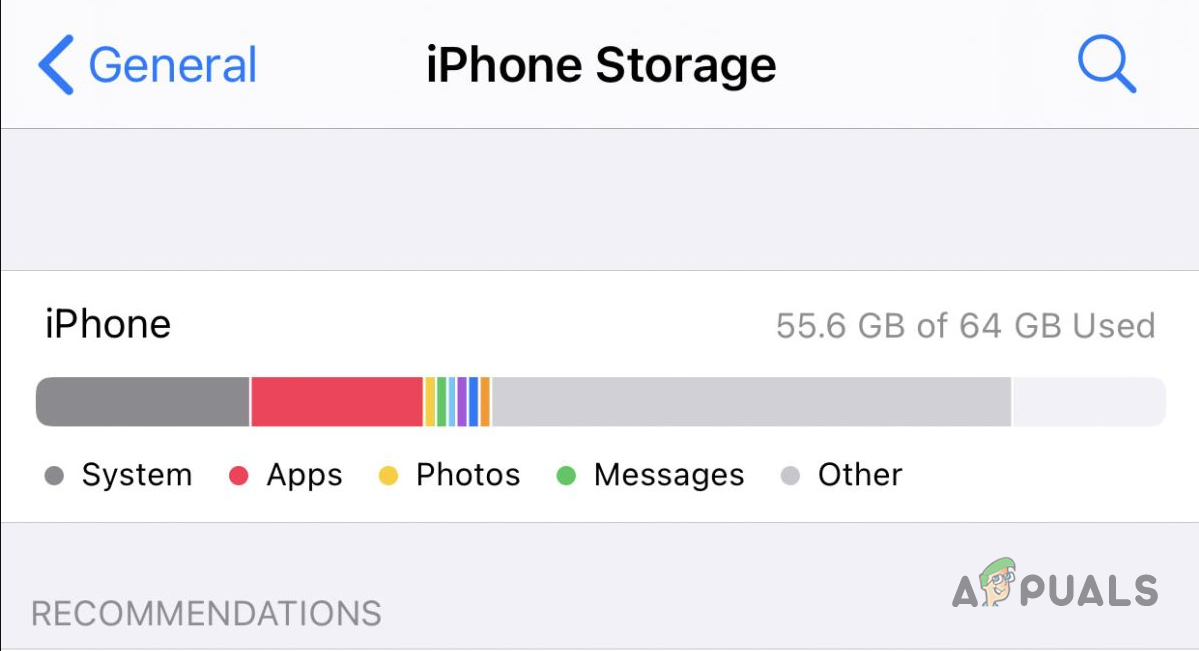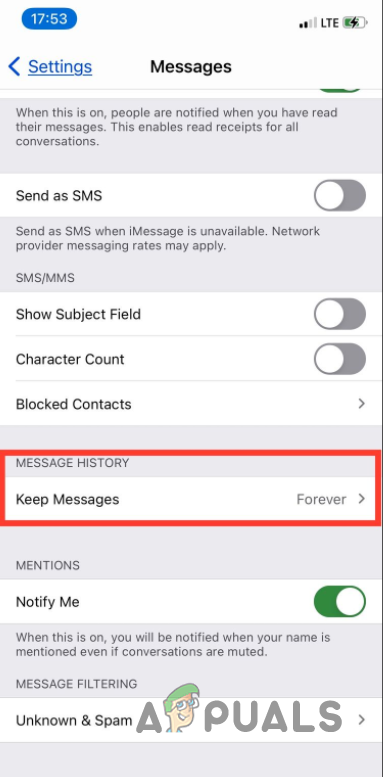As it turns out, on your device, you can view the amount of memory that you have by going to Settings > General > iPhone Storage. After a few moments, a graph is shown that depicts the different files and data that is taking up your storage. At the end of this graph, you might see something called “Other” or, in some cases, “System Data”. Let us first go through this and understand why this exists and what it is used for.
iPhone’s Other Storage
Contrary to the other types on the graph such as Apps, Media, etc. “Other” or “System Data” is not really self-explanatory. As it turns out, Other or System Data is the portion where all of the cache files are stored on your system. This is stored as other because there is no other place where it can fit, thus the name. However, this does not only include cache files, it can also store up settings, saved messages, mail attachments and much more. It is because of this that, over a large period of time, you might see this portion of storage accumulating more and more space. If this case is applicable, you can choose to free up this space on your device. Unfortunately, in order to do this, there is no one absolute method or option that you can use. Rather, you will have to follow a set of different methods, and depending on your use case, one will be more effective than the other in freeing up the accumulated space. With that said, let us get started and take you through the different methods that you can use to free up the Other storage on your iPhone.
Clear out Old Messages
The first way that you can free up some of the Other storage space on your device is by clearing out old messages that are stored on your device. If you have not chosen to automatically delete your messages after a certain period, these remain forever and eat up your storage. As such, clearing out your old messages can often save you some storage. To do this, follow the instructions given down below:
Clear Safari Cache
Another way that you free up some of the Other accumulated storage is by clearing out your Safari cache. As it turns out, when you visit webpages on your browser, certain parts of it are stored in a cache so that they can be loaded up faster when you visit it again. Over time, this cache can grow bigger and take up a lot of space. Follow the instructions down below to clear out the Safari browser cache:
Delete Mail Cache
The mailing app on your device can also use the Other storage by storing up the attached documents in there. As such, in order to clear out the Mail cache, you will have to remove your email account from your iPhone. Once you have done that, the mail cache will be deleted. With that done, you can simply add your email account back again without any worries. To remove your account, follow the instructions down below:
Offload Apps
Finally, iOS has an option that allows you to uninstall an app from your account while keeping its data intact. As such, you will be able to free up the space that was taken by the app itself. However, in the future, if you choose to install the app back again, you can do so and it will be as if the app was never deleted since the data is still there. This is called offloading an app. To free up some space on your iPhone, you can offload apps on your device and then if the need arises in the future, you will be able to install them again without losing any of the data. To offload an app, follow the instructions down below:
What are ‘Blue Arrows’ on Icons and How to Get Rid of them?How to Get Rid of Bing On ‘Chrome, Firefox, Edge and Cortana’How to Get Rid of AdChoicesHow to Get Rid of Red Screen Virus











